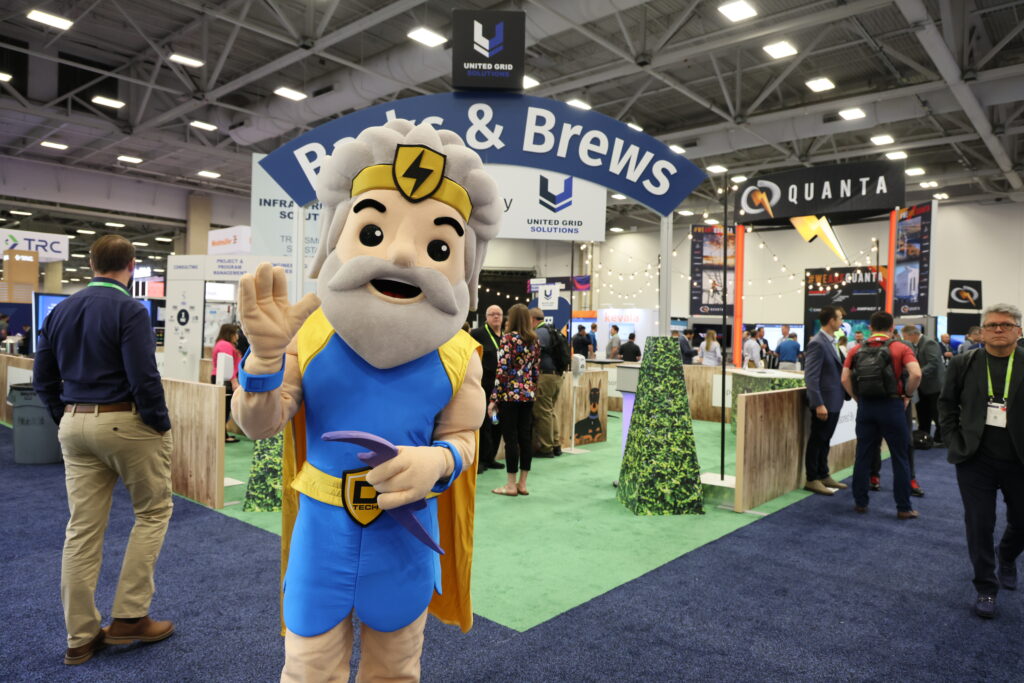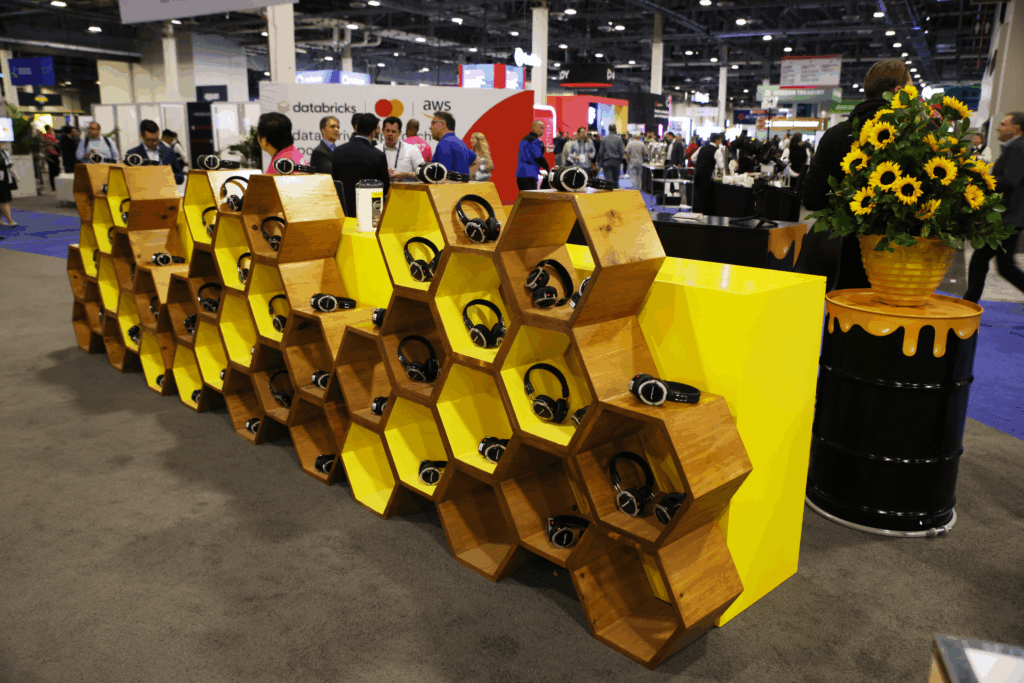
Creating memorable moments that your attendees will talk about for years to come and setting your exhibitors up for success can be demanding but it will always pay off in the long run. Crafting experiences that captivate your audience while meeting your own objectives requires careful planning and execution. Learn more about the essential steps you should take toward planning a successful event.
Whether it’s your first year organizing a trade show, or you’ve been in the industry for a long time, people and communities change. Thanks to environmental, cultural, and technological advances, your audience will always evolve. Their wants, needs, influences and opinions will drive your event’s activations, networking opportunities, and overall agenda.
The first step of understanding your audience is identifying their demographics, including location, job titles, interests and ages. Buyer personas aren’t just valuable for B2C marketing – they can help you visualize your target audience and analyze things like pain points, motivations, etc.
You can also directly ask your audience what they want to see and experience at your event with a survey. It can help you tailor your event accordingly. Be mindful however that when you open the door for direct input, it can sometimes confine your inspiration. Don’t be afraid to think outside of the box if it leads to relevant, memorable moments.
If you’re struggling to connect with your community or if you’re looking for inspiration, there are valuable tools and AI resources such as The Expo Group’s CrowdPulse process that can help you determine your next steps when it comes to planning speakers, spaces, and interactive areas. Knowing your audience allows you to strategically design sessions that address their professional challenges, build beneficial networking opportunities, and leave a lasting impression.

It is essential for trade show organizers to define clear objectives early on in the planning process. Your objectives directly impact your actions leading up to the show as well as the procedures taken onsite and after the event.
To see real results and actionable takeaways from your event, you must ensure your goals are S.M.A.R.T.
S.M.A.R.T. goals are specific, measurable, achievable, relevant, and timebound.
The first step is to be specific about what you’re looking to accomplish. Instead of simply “doing better than last year” you may want to look at improving post event feedback or growing your exhibitor base. Being as specific as possible will help you define what success means to you and your team.
To better understand how your efforts are contributing to meeting your goals, make sure they are measurable. Whether you’re measuring your results through numbers or you’re able to track your progress along the way, you can assign value to your actions.
It’s important to be realistic to ensure you can achieve your goals. Be sure you are taking your audience, their patterns, and the event’s history into account so you’re able to celebrate the small wins too.
Relevancy is a key component in a clearly outlined goal. Are you generating new registration sales, but seeing less repeat sign-ups? Determining what matters more for you and your trade show can save you lots of time and energy.
Lastly, a successful objective should be timebound – meaning you can achieve it in a specified timeframe. Setting a start and end date can also help you stay motivated to continue your plan of action.
S.M.A.R.T goals should be as detailed as possible. For example, if your goal is to boost attendee engagement from previous years, your objective may be to increase app downloads by 25% over the next 6 months leading up to the show.
According to Personify, the average cost of a trade show is about three to four times the cost of the venue.
Your chosen venue will also play a role in how you’re allocating your funds. An example of this would be to plan to cover parking fees if it’s not included in your contract. Some facilities have security staff and partnerships with vendors that you will need to include in your budget.
Researching venues and taking advantage of off-peak season pricing can help you in the long run. Just remember your community and what makes sense for them.
You’ll also need to take other expenses into account like signage, technology, entertainment, catering and the food and beverage minimums that come with it.
Your trade show management team will need to budget for event promotions through online ads, social media campaigns, and email marketing.
Onsite logistics, labor, and storage are other variables that can significantly increase your trade show costs.
With all of these costs considered, it’s helpful to work with a General Service Contracting team who can manage the logistical details for you. General Contractors can offer industry knowledge and expertise, helping you manage your budget and spend your dollars wisely.
Your marketing efforts tie into your show’s success. Throughout the lifecycle of a trade show, marketing never really ends. You’re promoting the event to get your community to attend and participate, you’re announcing sessions and experiences during the show, and you’re getting a head start advertising next year’s show. By being purposeful with the various methods of marketing, you play a direct role in increasing your event’s awareness, perception, satisfaction, and relevance.
Social media can be great for organic brand awareness and audience engagement when used consistently and strategically. You can also utilize direct targeting with paid ads on each platform. Elevating your social media platforms starts with conducting social research. What social platforms are they on? What times do they typically interact with your posts? Social research can help you better understand your community and develop more engaging content.
If you haven’t already, create a page for your show on the relevant social platforms for your audience. This allows your exhibitors and attendees to tag your page when they’re planning for the show, generating leads, or posting about their experience. Creating a consistent hashtag is also beneficial as it provides an easier way for your followers to tag your event, giving you an overview of the general perception around your show and helping you with content creation.
Email marketing is a more traditional method of marketing that some businesses find valuable while others report seeing less engagement. Be sure to focus your efforts on the methods that work best for you and your industry. When creating emails, don’t forget to include call to action links and monitor engagement to ensure you’re spending your time appropriately. Keep emails clear and concise and include high quality media content to catch their attention. If you have a Customer Relationship Management (CRM) platform you can also create email campaigns that allow you to track interactions and target your emails to your prospects based on their engagement with each one.
Some great ideas for promoting your event include highlighting key speakers and unique sessions with clear call to actions for registration.
Offer sponsorships to build relationships with key players in your industry or work with relevant thought leaders to generate buzz around your show.
Just remember to center your marketing strategies around your community. Ensure you’re marketing the event to the appropriate audience. You don’t want to hear that your exhibitors didn’t generate valuable leads or that attendees found the sessions to be irrelevant. Be clear about who should attend, and what an exhibitor would gain by exhibiting so that you’re setting expectations from the start.

In an ever-evolving trade show industry, technology integration is a necessity for show organizers. Event technology isn’t just PowerPoint presentations and Wi-Fi. It encompasses every facet of an event from concept to completion.
Before the show, you can make use of tools that handle registration management and help you obtain and manage sponsorships. During the show you’ll find value with an app for attendees to track sessions and schedules, or an AI bot designed to answer frequently asked questions about your event. After the show you can evaluate your performance with platforms that give you detailed analytics and insights.
To further represent how technology can be used for a trade show or conference, check out these 5 Key Findings from Event Tech Live.
There are various ways you could go about integrating tech with your event. You could partner with an agency specializing in trade show technology. You could also work with multiple vendors who focus on different types of event tech like lead retrieval or apps.
However, choosing a General Service Contractor that has the connections and resources to provide an all-in-one experience through technology, logistics, and exhibitor services can make your trade show planning a lot more seamless.
While there are platforms that share analytics and satisfaction ratings, a post-event survey can help you gauge sentiment and feedback from your show. You can send it to your selected group and get their direct opinions on your event’s networking opportunities, sessions, speakers, parties, and more.
There are some general tips for creating surveys that could help you improve the number of responses you’re receiving, as well as reducing the number of incomplete surveys.
The most crucial step of survey creation is narrowing down your questions. Even the most determined survey takers will give up if your survey seems never ending. A great way to set expectations is to share how long the survey would typically take. For example, someone would be more likely to click on your survey if your subject line or first page showed that it took only 3 minutes to complete.
Another great tip would be to make all answers that are open-ended, skippable. You can supplement this by asking them to rate their experience, and depending on what they selected, you follow up with a skippable page asking them why it was great or why it wasn’t.
If you have tried tailoring your surveys over the years but you’re still not seeing a lot of engagement, you may want to consider other options. You could instead incorporate an optional survey after each session, so that attendees can rate them 1 to 5 and have the opportunity to share their opinion in real time. This would also allow you to instead focus your post-event follow-up on thanking them for being there and even generating a poll where they can all vote on what area of the show could be improved, helping you curate content and themes for next year.
Don’t forget to personally thank your sponsors for their partnership and involvement.
Share your successes and where you would like to improve with your internal teams and vendors so that everyone can build out strategies for next time.
However you decide to follow up with your community after your event, make sure it is purposeful, thankful, and inspired. By asking for their feedback, you are fostering future interactions and ultimately setting your team up for success so that next year’s show can shine even brighter.
